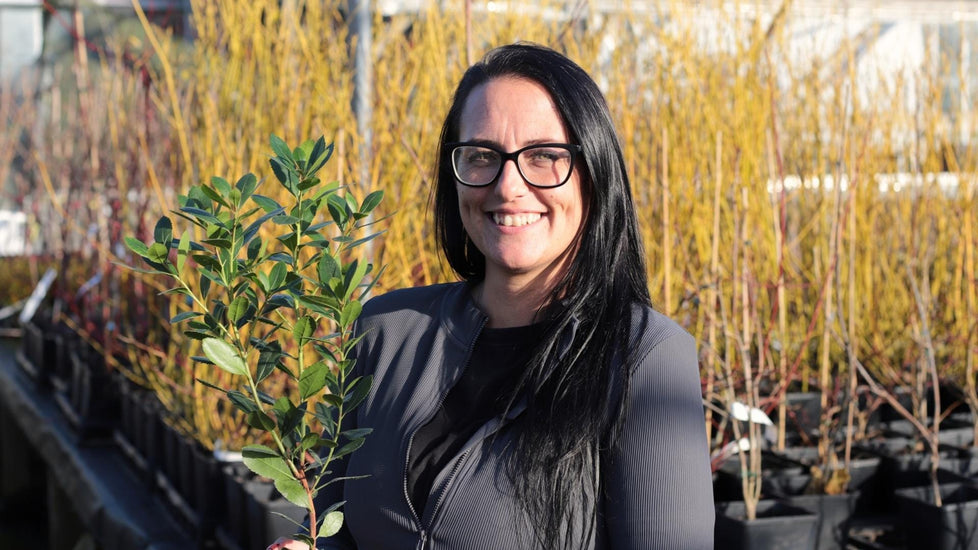Birch Trees
With their tall, slender forms and bright white or copper peeling bark, birch trees are a classic feature of British woodlands. A native tree with varieties suitable for any size of garden, they’re easy to care for and attractive to a huge number of wildlife species. Our birch trees come to you from our nursery in the South Downs, where an outdoor environment, sustainable growing practices and professional pruning all combine to make them healthier and hardier than most.
Need help picking?Sort and filter
South Downs National Park
Meet Danielle
110 years' expertise free with every tree
Danielle's nursery has been growing trees in the South Downs National Park for over a century, and it shows. Dug up and sent straight to your garden at between 18-36 months old, their quality rootstocks, expert pruning and natural pest control mean that these traditionally field-grown trees are the hardiest you can get.
Need help picking?
Birch Tree FAQs
Where do birch trees grow best?
These trees are happiest in moist, well-drained soil, so make sure the spot in your garden gets plenty of sunlight (at least 6 hours) and a shaded base so your birch tree can thrive.
How do I care for a birch tree?
The first year of growth for birch trees requires moist soil and lots of watering. Continue to water regularly beyond this - these birch have a real thirst!
Should I prune my birch tree?
The best times to prune birch are during late spring, late fall and winter. Pruning in the spring before the first leaves emerge will cause the tree to lose sap, and fresh pruning cuts can attract birch borers in the summer.
How long does it take a birch tree to grow full size?
It takes 40 years for birch trees to reach maturity. That’s 40 years of watching the beauty of a birch unfold. How brilliant.
Can I grow a birch tree in a container?
It is possible to grow silver birches in containers with some TLC, making them a wonderful addition to a small garden and leaving you with a beautiful, small, and manageable tree. Remember, if you’re choosing to pot, water a LOT!
How tall do birch trees grow?
Depending on the growing conditions, birch trees will get to around 15m approximately.
How do birch trees reproduce?
A large number of small birch seeds are released into the air, where they are dispersed by the wind.
How to identify a birch tree
Birch trees are distinguished by peeling bark, which can range from white to grey to yellow in colour. It is also quite obvious from the leaves, since birch leaves are typically triangular with jagged edges.
What is the colour range of birch trees?
The colour range of birch trees are typically pale white to reddish brown or yellow.
Are birch trees deciduous?
Its light green leaves turn yellow in autumn, making it one of the most striking deciduous trees around.
How fast do birch trees grow?
Birch trees grow quickly reaching 8m tall with a 3m spread in approximately 10 years.
Why are birch trees white?
There is a belief that the white trunk helps reflect sunlight and keeps the layer of cells below from thawing out when the sun is out.
Which birch tree has the whitest bark?
All birches have white bark, but the Himalayan birch, Betula utilis, has the whitest.
What are birch trees used for?
Cystitis and other urinary tract infections can be treated with the leaves, which are diuretic and antiseptic. We would not suggest trying it though, go to the doctors or your local chemist before anything else!








